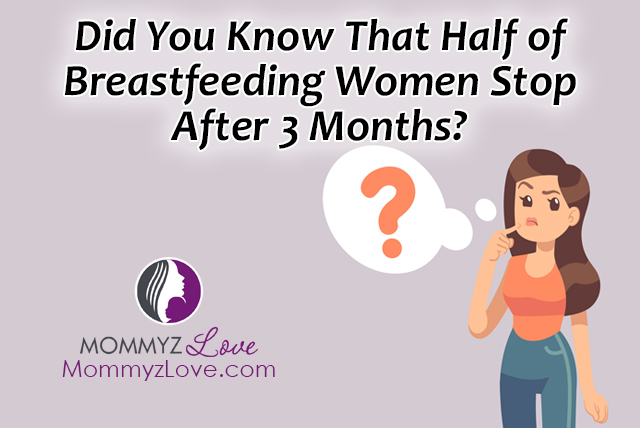According to the World Health Organization (WHO) and the American Academy of Pediatrics (AAP), the best way to feed a growing infant is through exclusive breastfeeding for the first six months and then weaned with complementary foods while breastfeeding up until the first year of their life. By doing such, you and your baby will be able to reap the most out of breastfeeding.
Despite the advocacy and promotion of many health organization and lactation experts, the USA is still falling behind in terms of breastfeeding rates. Based on the 2018 Breastfeeding Report Card of the CDC, initially, most mothers are doing good with over 4 million babies (83.2%) getting to breastfeed after being born. Unfortunately, these numbers significantly drop month by month, with 1 in 4 still getting to exclusively breastfeed by 6 months.
Breastfeeding By The Numbers:
- Among infants born in 2015, 4 out of 5 (83.2 percent) started out breastfeeding. This high percentage of babies who start out breastfeeding shows that most mothers want to breastfeed and are trying to do so.
- Almost half (46.9 percent) were exclusively breastfeeding at 3 months.
- Only one-third (35.9 percent) of infants were breastfeeding at 12 months.
- Almost half (49 percent) of employers provide worksite lactation support programs.
- Over 1 in 4 babies are born in facilities that provide recommended maternity care practices for breastfeeding mothers and their babies.
These statistics were drawn from the data of breastfeeding practices and support from 50 states, including the District of Columbia (D.C.), Puerto Rico, Guam, and the Virgin Islands.
Benefits of Breastfeeding For Baby, Mother, and The Society
Babies that are breastfed benefit from breast milk in so many ways. Other than protecting them from the common childhood illnesses, breastfed babies are also said to have a lower risk for asthma, obesity, type 2 diabetes, ear and respiratory infections, and sudden infant death syndrome (SIDS). Alternately, mothers who breastfeed also receive benefits such as the reduced risk for hypertension, type 2 diabetes, breast, and ovarian cancer.
Reasons For Ceasing Breastfeeding
Contrary to popular belief, breastfeeding doesn’t just happen. It’s a learned skill that many women struggle with. The difficulties with breastfeeding can lead them to stop and opt for formula instead. Here are just a few issues mothers complain of:
- Breast pains
- Sore and aching nipples
- Improper latching
- Low milk supply
- Returning to work
Supporting breastfeeding mothers should come from all aspects of their environment — their families, friends, workplaces, and community. The director of the CDC’s Division of Nutrition, Physical Activity, and Obesity, Ruth Petersen MD, MPH, said “We are pleased that most US babies start out breastfeeding and over half are still breastfeeding at 6 months of age, but we have to keep supporting them. The more we support breastfeeding mothers, the more likely they will be able to reach their breastfeeding goals.”






